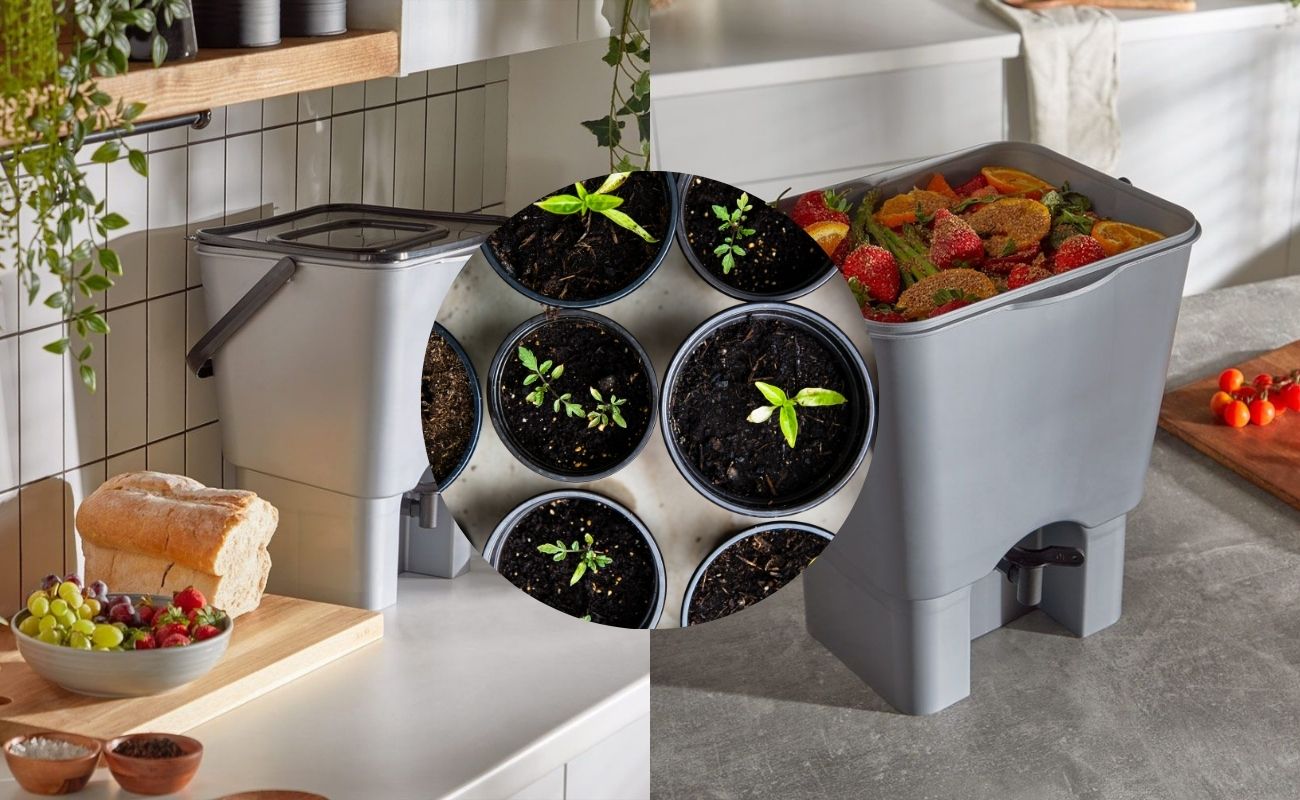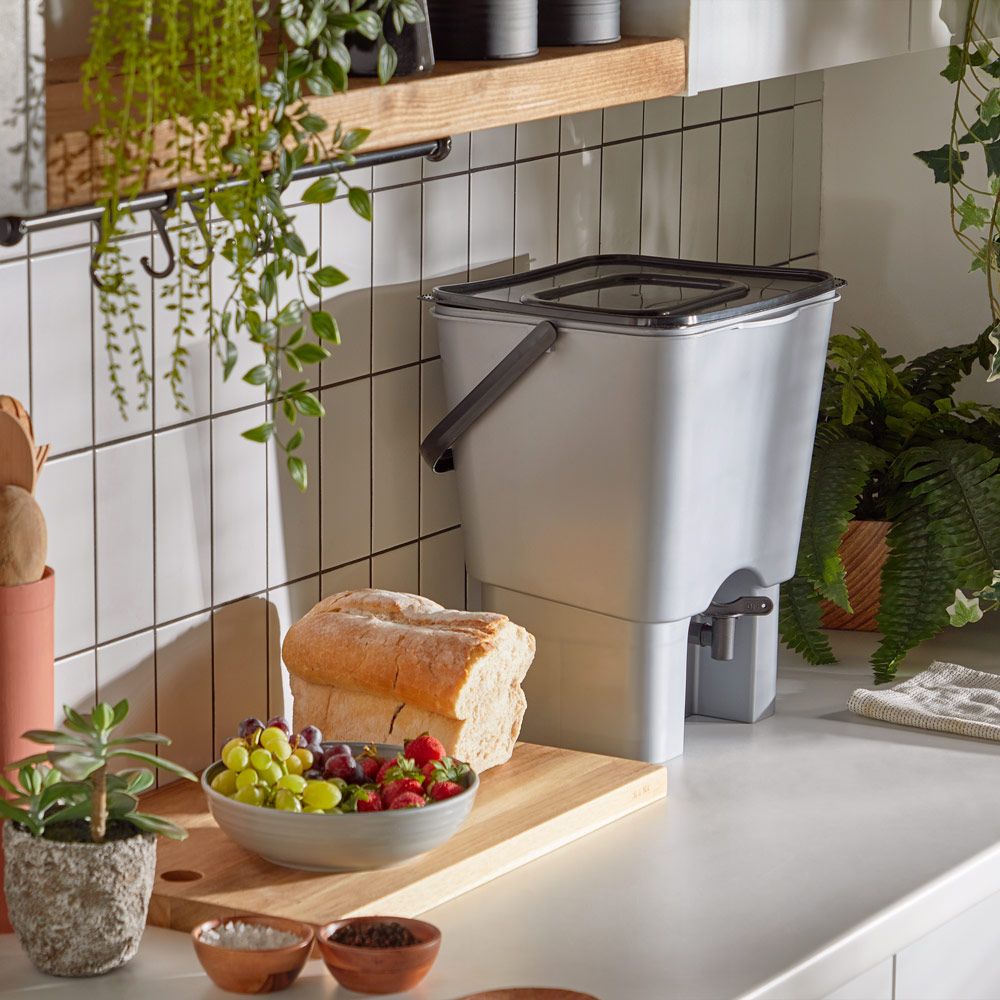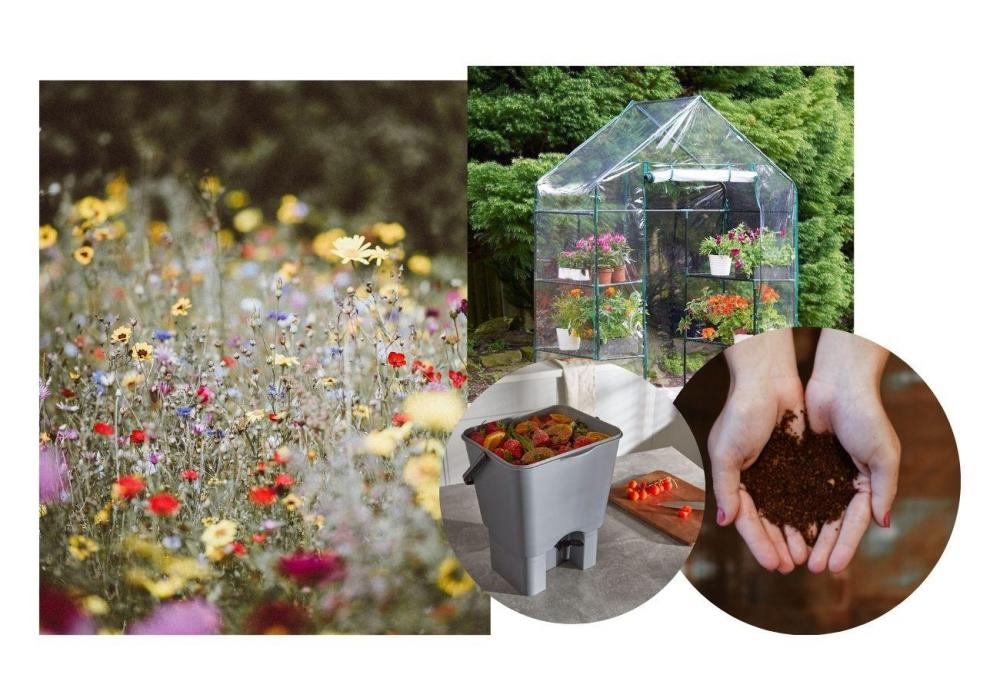Everything You Need To Know About Bokashi
Bokashi bin dos, don'ts & composting advice
A more sustainable, easier and quicker approach to composting, bokashi bins are a great addition to your home. Letting you almost completely cut the waste in your kitchen, bokashi bins are broadening the horizons of composting. Easily done in your kitchen with no bad smells and no fuss, here’s everything you need to know to get started with your bokashi bin.


What Is A Bokashi Bin?
A bokashi bin is a different approach to composting. Using microorganisms to ferment food, the process creates a super fertile compost that will enrich your soil, as well as a powerful tea that is perfect for feeding plants. Composting far quicker and easier than traditional compost bins, the process also works with a wider range of foods, creates no greenhouse gasses for more sustainable composting and can be done odour-free in your kitchen.
Who Invented Bokashi?
Bokashi is a Japanese word for fermented organic matter, originating as a waste composting system in Japan in the 80s before coming to the US and UK.
How Bokashi Composting Works?
Bokashi bins essentially ferment your waste, using an air-tight bucket and micro-organisms in the bokashi gran to ferment without putrefying or breaking food down. Once transferred outside, this earlier stage means your waste breaks down quicker, easier and produces more nutrients to help your soil and plants.
Here is an easy how-to for using your bokashi bin...
- Build your bokashi bin following our easy instructions, inserting the filter tray to separate the waste from the nutrient-rich tea it’ll produce.
- Add your waste to the bin. After every 3-inches or so of waste, flatten it down and add a sprinkle of bokashi bran. Repeat this over time until the bin is full.
- Once full, let the bin sit for 2 weeks to ferment. Regularly drain the tea so it doesn’t get too wet.
- Dilute the tea with a bit of water and use it to feed plants around the house and garden. It’s also a powerful cleaner for clearing drains.
- After sitting for 2 weeks, simply add the contents to your compost pile or bury it to enrich your soil.
- 2-4 weeks later, the waste will be fully composted into rich soil you can use around the garden.


What Can You Put In A Bokashi Bin?
You can really put any plant or food product into your bokashi bin, able to handle a far wider range of waste than a traditional composter. Unlike normal compost bins, you can throw meats, cheeses, eggs and more into your bokashi bin, letting you reduce almost all kitchen waste.
What Not To Put In A Bokashi Bin
Don’t put any material other than food in your bokashi. The micro-organisms won't be able to break down glass, plastic or any chemicals. Also, avoid putting any liquids into the bin as this can offset the balance and affect fermentation. Large meat bones and food that is already mouldy are also no-gos for your bokashi bin.
Can You Bokashi Meat?
Yes! Unlike normal compost bins, the micro-organisms in bokashi bins can work their magic on leftover meat. The only exception is meat bones and meat that has gone bad or mouldy, avoid adding these to the bin to keep it working at its best.


What Is Bokashi Powder?
Bokashi powder, or bokashi bran, is a mixture of micro-organisms that work to ferment your food waste. It also stops the food from putrefying so stops bad smells lingering around your kitchen.
2 lbs of bokashi bran will last around 3 months so it’s inexpensive and long-lasting to buy, but you can make your own bran with recipes online if you have time to spare.
Can Bokashi Be Fed To Worms?
Worms love bokashi! Once the food has been fermented in the bin before being moved to the garden to compost, you can add the mixture to your worm farm for a boost of nutrients and food.
Can I Put Bokashi In The Compost?
Yes! Once your bokashi bin has sat and fermented for 2 weeks, it’s ready to be composted. Add the contents to your traditional compost bin, compost pile or simply bury the waste to compost and enrich your soil.



 Need help?
Need help?

